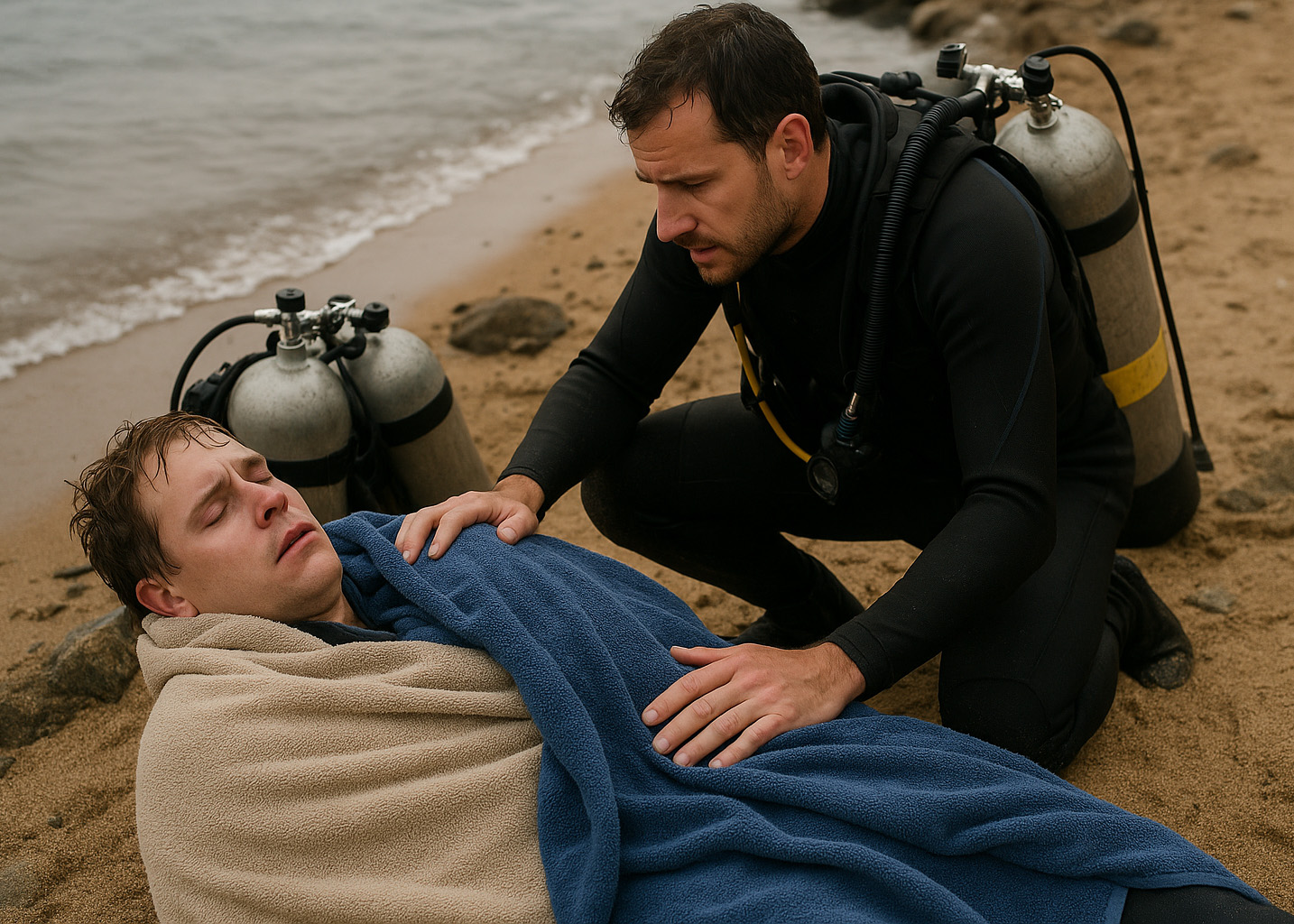This is a plan for dealing with hypothermia and outlines the specific steps you should take if a diver is suspected of experiencing hypothermia — a potentially life-threatening drop in core body temperature, typically below 95°F (35°C). This condition can develop gradually, especially in cold water, and requires quick, informed action.
🔷 Plan for Hypothermia
1. Recognize the Signs and Symptoms
Early identification is critical. Symptoms may include:
Shivering (early stage)
Numbness or tingling
Fatigue or sluggishness
Poor coordination or clumsiness
Slurred speech
Confusion or memory loss
Pale, cold skin
Weak pulse or shallow breathing (severe cases)
2. Remove the Diver from the Water
Get the diver out of the water gently and quickly, minimizing exertion.
Avoid rough handling as cold skin and muscles can make the diver more susceptible to cardiac issues.
⚠️ Do not let the diver walk or engage in strenuous activity. This can circulate cold blood from the extremities and shock the heart.
3. Activate Emergency Medical Services (EMS)
Call 911 or local emergency services.
Use emergency contact procedures established in your EAP.
Provide your exact location, status of the diver, and estimated time since onset of symptoms.
4. Initiate Rewarming (Passive or Active Based on Severity)
✅ For Mild Hypothermia (shivering, alert, coherent):
Move the diver to a sheltered, warm environment (e.g., dive boat cabin, vehicle, shelter).
Remove wet clothing.
Wrap in dry blankets, towels, or sleeping bags (preferably pre-warmed).
Use skin-to-skin contact if necessary.
Offer warm (not hot) sweet liquids if the diver is fully conscious and not nauseated.
❌ Avoid: Alcohol, caffeine, or smoking, as they interfere with heat retention and circulation.
⚠️ For Moderate to Severe Hypothermia (confusion, loss of coordination, unconsciousness):
Treat as a medical emergency.
Avoid aggressive rewarming (like hot baths or direct heating pads).
Wrap gently in insulating materials including the head and neck.
Do not offer food or drink.
Prepare for CPR if breathing or pulse stops.
5. Monitor Vital Signs
Check airway, breathing, and circulation.
Be ready to provide rescue breaths or CPR if needed.
Record time of incident, vital sign changes, and actions taken to assist EMS.
6. Transport to Medical Facility
Transfer care to EMS as soon as possible.
Continue insulation during transport.
Provide emergency responders with your incident log, including:
Time diver was removed from water
Duration of dive
Water temperature
Gear used (e.g., wetsuit, drysuit)
Observed symptoms and progression
First aid provided
✅ Additional Considerations
Prevention is key: Always check water temp, exposure protection, and dive time limits.
Document the event fully after resolution.
Include local emergency numbers and directions to the nearest hospital with hyperbaric capabilities (if diving-related symptoms are also suspected).




